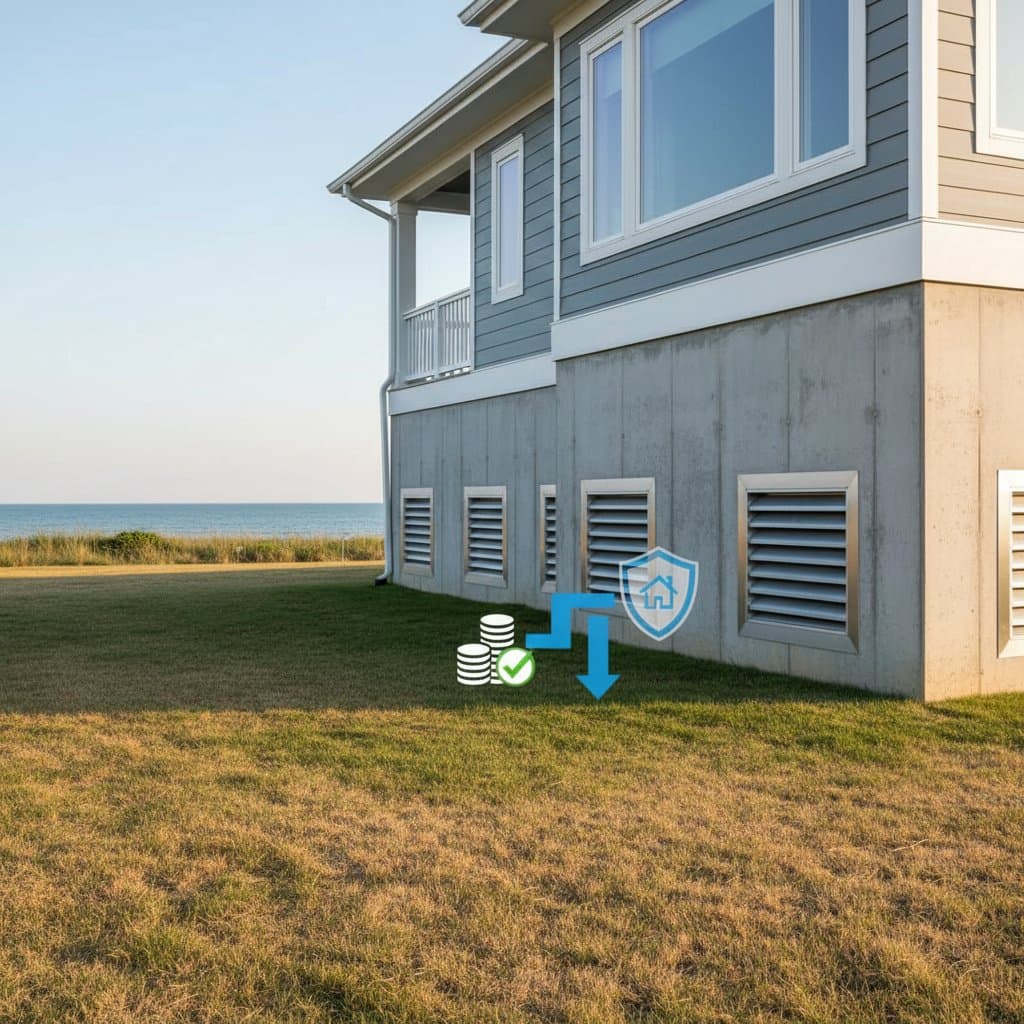Flood Vents: Essential for 2025 Insurance Compliance
A home foundation appears solid, yet floodwater exerts immense pressure that can fracture concrete and compromise the entire structure. Flood vents address this vulnerability and align with emerging insurance requirements. These devices function as engineered openings in foundation walls, not mere grilles, to equalize water pressure, mitigate damage, decrease premiums, and satisfy regulatory standards ahead of policy renewals.
Project Overview
Average Cost: $250 to $1,200 per vent installed
Timeline: 1 to 3 days
Lifespan: 20 to 25 years
Best Season: Late spring or early fall
DIY Friendly: Partial
Detailed Cost Analysis
The expense of flood vents varies by type, material, and installation method. Homeowners typically install at least two vents on opposing walls to facilitate adequate water circulation, though larger basements or crawl spaces demand four or more. For a standard single-family home, total costs range from $1,000 to $3,000 to achieve full compliance.
| Type of Flood Vent | Material | Typical Cost per Unit | Installation Cost per Vent | Total Installed Cost |
|---|---|---|---|---|
| Basic Air Vent Conversion | Galvanized steel | $100 to $200 | $150 to $250 | $250 to $450 |
| Automatic Engineered Vent | Stainless steel | $200 to $400 | $200 to $300 | $400 to $700 |
| Premium Dual-Function Vent (air and water flow) | Marine-grade aluminum | $400 to $800 | $250 to $400 | $650 to $1,200 |
Labor rates influence these figures, particularly in coastal regions like the Gulf Coast or northeastern shorelines. Such areas often incur 15 to 20 percent higher costs due to rigorous floodplain regulations and mandatory permits.
Evaluating DIY and Professional Installation
Installation of flood vents seems straightforward, yet precision determines insurance approval and effectiveness. Professionals excel in complex scenarios, while DIY suits simpler tasks with proper preparation.
| Criteria | DIY Possible? | Professional Recommended? |
|---|---|---|
| Replacing existing vents in accessible walls | Yes | Optional |
| Cutting new openings in foundation walls | No | Yes |
| Meeting FEMA or community floodplain codes | No | Yes |
| Sealing and corrosion-proofing | Partial | Yes |
| Final certification paperwork | No | Yes |
Opt for professional assistance in these situations:
- Foundation work involves structural modifications or reinforcements.
- Documentation supports insurance claims or local permits.
- The property lies in a high-risk flood zone where errors risk coverage denial.
Pursue DIY installation if these conditions apply:
- Prior experience includes masonry tools and waterproofing techniques.
- Access to current vent locations proves unobstructed.
- Adherence to manufacturer guidelines occurs without deviation.
Position vents at grade level to enable automatic bidirectional flow. Incorrect placement may retain water, exacerbating the damage vents intend to avert.
Benefits of Flood Vents for Foundation Protection and Return on Investment
Beyond compliance, flood vents fortify home resilience and financial value. They integrate seamlessly into broader flood mitigation strategies.
- Minimized Structural Harm: Equalization of pressure averts cracks or collapses during inundation events.
- Decreased Insurance Premiums: Verified systems yield reductions of 10 to 25 percent annually, based on flood zone and policy details.
- Enhanced Marketability: Prospective buyers in vulnerable areas prioritize properties meeting current standards.
- Sustained Performance: Durable materials withstand corrosion and infestations, curbing ongoing expenses.
Pair vents with sump pumps, impermeable crawl space barriers, and optimized site grading for comprehensive flood resistance. This holistic approach recovers initial costs through avoided repairs and premium savings.
Maintenance Strategies for Longevity
Flood vents demand little routine care, yet biannual checks preserve functionality. Adhere to this protocol:
- Examine for debris following intense rainfall or flood occurrences; remove obstructions promptly.
- Assess metal components for rust; replace deteriorated seals as necessary.
- Verify automatic mechanisms by manually operating doors to confirm unobstructed motion.
- Apply fresh sealant or paint to adjacent masonry to block moisture intrusion.
- Record all evaluations for insurance records, fulfilling policy stipulations.
Routine inspections require 15 to 30 minutes and involve no financial outlay beyond effort. Professional services for yearly upkeep cost $150 to $300, encompassing thorough reviews and cleanings.
Steps to Implement Flood Vents and Secure Compliance
Flood vents offer a cost-effective solution to fulfill insurance obligations and preserve structural integrity. The upfront expenditure pales against flood-related losses or escalating rates. Through meticulous installation, thorough records, and consistent upkeep, these vents endure for decades while generating annual financial benefits.
Begin by engaging certified floodproofing specialists for on-site evaluations and detailed estimates. Confirm product certifications and alignment with local floodplain ordinances to guarantee efficacy and approval.
